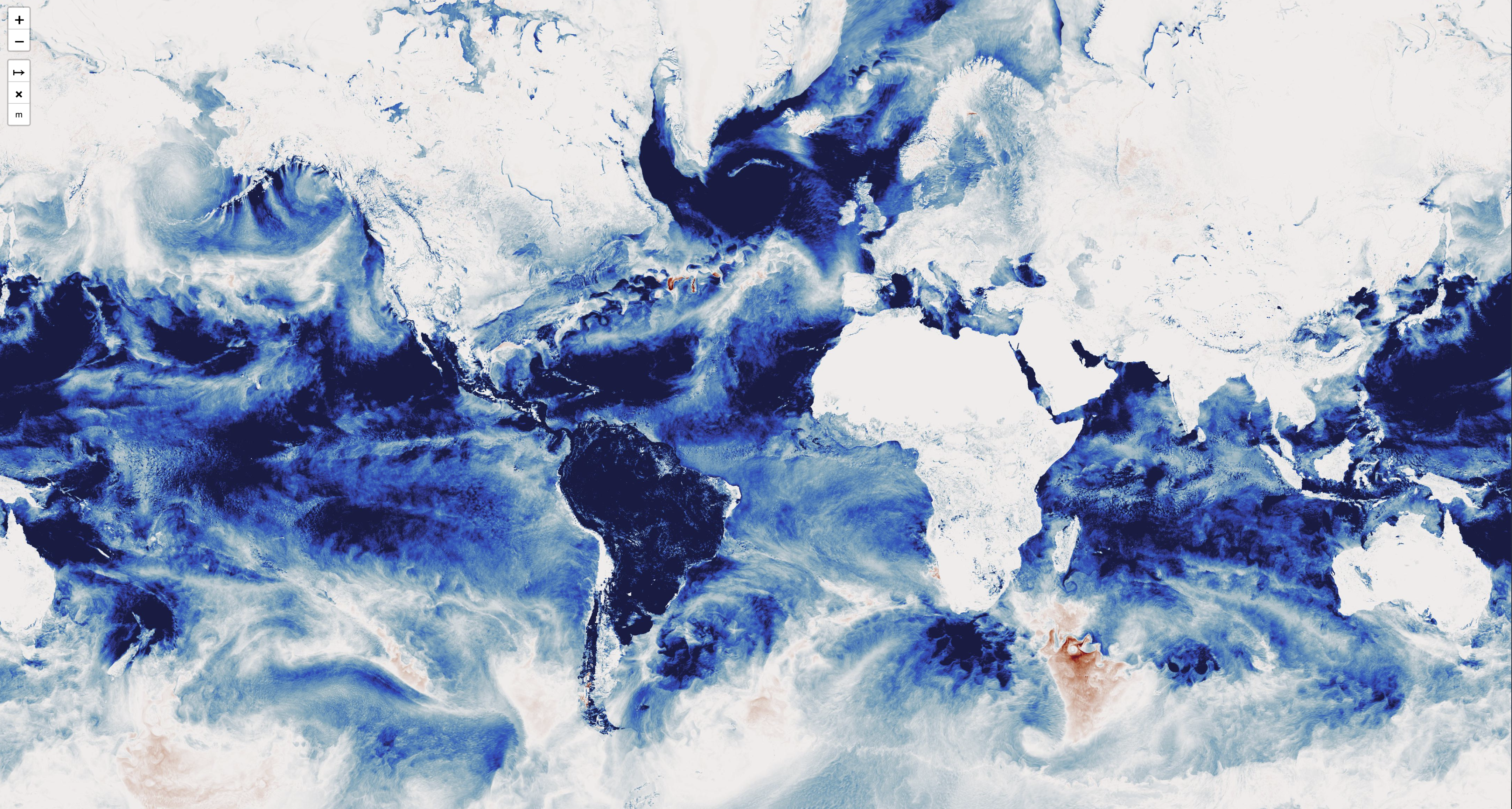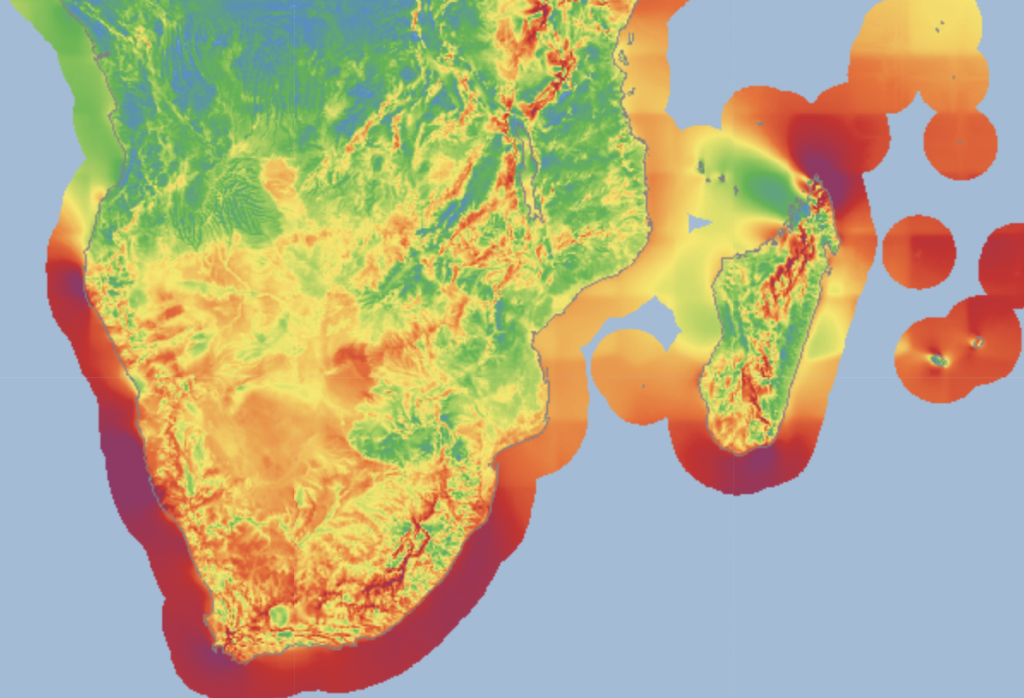EVE will help service providers access advanced computational technologies, artificial intelligence, and the most complete representations of existing descriptions of the Earth system and its projected changes. Thus, EVE will enable a new generation of climate services, to support the well-being and development of communities across the globe.
"Equity, justice, culture and well-being are key determinants of our vulnerability and exposure and these are the places were we need more information and knowledge."
Debra Roberts, IPCC WG-II Co-Chair

EVE will create a digital commons connecting the most advanced climate projections, the Earth observation community with substantial compute and data resources to help users create tools for civil society to manage the Anthropocene.

Climate service providers will have access to tools built on the latest technological advancements, allowing them to customize their products to the needs of their users and scale their information provision globally.

EVE will allow for short-, medium-, and long-term planning to support early-warning systems, by linking the best available scientific projections for climate and environmental changes with the most detailed representations of our past and present understanding of the Earth system.

By supporting a new generation of climate services EVE will help them build climate resilience for communities around the globe, especially in the most vulnerable regions.
Yes, but not by every change, and by different changes in different ways. To be clear, climate science has long established why Earth is warming, and has developed models that have explained its broad trends and contours. Scientists understand, in general terms, how some forms of extremes might change with warming. What’s lacking is a specific understanding of such changes, as is needed to guide adaptation. Often this is because projected changes in atmospheric and oceanic circulations and patterns of precipitation differ from one model to the next for reasons we don’t understand. While this makes it hard to form expectations, and hence be surprised, there are a growing number of cases where models do agree with one another, but observed changes behave differently, i.e., surprises. A prominent example is the persistence of La Niña conditions over the past half-century (the present El Niño notwithstanding), others include the slowdown in warming between 1998-2013, or the rapidity of arctic sea-ice decline in 2012.
In addition to the reanalyses, which are often the starting point for global climate data, a great many organizations and agencies collect and disseminate climate-related data directly– from satellites, networks of ground sensors, gliders, floats, and drones, to integrative ecosystem supersites. EVE will strengthen these services by making it easier to access their data and combine them with reanalyses and to climate projections with local granularity, globally, by increasing access to open and interoperable data and software, and through the equitable distribution and use of this capacity.
There is no unequivocal definition of local, but many people would associate it with the environment that they can perceive with their senses, and the space over which they typically move under their own power, if not a somewhat larger area. This defines local to be about 1 km, or perhaps between 0.1 km to 10 km. Infrastructures are constructed, lives are lived, and impacts are felt on this scale of ‘granularity’. This has been appreciated for some time, and has motivated work in climate services to ‘downscale’ models with much reduced (100 km) granularity to finer scale. Hence the phrase ’local granularity, globally’ emphasizes the importance of the km-scale for impacts, globally; for observations whose footprint is often on a local scale, globally; and for how important climate processes (ocean eddies, overflows, orographic effects, atmospheric convection) influence much larger-scales, sometimes referred to as upscaling.
EVE is a technology project, and is rooted in the experience that technology, increasingly through the use of AI, can improve the quality of information while simultaneously lowering the barriers to its access. EVE is aware, however, that this requires the engagement of the users of the information (or their trusted representatives) in its production. That is why EVE places such an emphasis on capacity development and exchange in its centers of excellence, to enable co-production at the forefront of technology. Ideally EVE would give every country in the world the capability to train people to develop models, AI algorithms, and tailor climate information to meet their needs. This is a tall task, and because it touches on the more difficult question of how humans and social systems interact with new sources of information, EVE also must engage research and researchers from the social and behavioral sciences.
No. EVE is additive and complements existing activities by targeting important scales that would otherwise be out of reach, i.e., EVE’s ‘local granularity, globally’. EVE emphasizes better information provision, whereas research also targets knowledge creation, and these are symbiotic. EVE thus needs and benefits from ongoing modelling activities, for instance as coordinated by the World Climate Research Programme, but at the same time, it will also support those external research efforts through its technology development, its ability to set standards, by increasing their access to frontier computing, and by providing career paths for their trainees.
A smaller number of centers risks not meeting the ambitious computing requirements to fill the required data space with the required diversity in modelling approaches. Too few centers also make it more difficult to engage a sufficient breadth of users, thereby limiting access to data and expertise. More centers could help EVE be more inclusive, sample more climate trajectories, and engage more users. However, given each center’s need to access a critical mass of human resources for model development, to innovatively develop and maintain infrastructure, etc., the reality of limited human and financial resources, and EVE’s novelty, having fewer centers, each with a higher profile, is advantageous.
EVE’s use of high-performance computing requires substantial electricity resources. Based on practice at some of the world’s leading supercomputing facilities, it is estimated that each EVE center would need to access approximately 50 MW of power. The compute resources need not be sourced from a dedicated site but must facilitate interoperability of software and data, maintain computing co-proximate with the largest sources of data. By focusing on the development of just a few centers, and concentrating the powered delivery to access renewables and favor circular economies, for instance through productive use of ‘waste’ heat, EVE will be exemplary of responsible power production and usage.
The € 300M per center per year price tag was estimated based on the current budget of international organizations whose profile overlap with parts of EVE’s remit, and it anticipates a roughly equal split between funding for staff, running costs (mostly power), and investments (hardware procurements).
EVE relies on a vibrant climate research and services community, and cannot be funded at their expense. EVE centers can be expected to employ some of the leading climate science, climate impact, climate services, and technologists world wide, but in the end this will represent a very small fraction of these workforces. Without simultaneously strengthening ongoing research activities, EVE would loose access to trained staff, would become less innovative, and would fail to adequately understand and communicate its outcomes. Without simultaneously strengthening existing climate services EVE would loose its ability to connect its data and information provision to the communities it must serve, let alone scale this globally. In this sense, EVE will only be successful if it strengthens climate science and service more broadly.
Without EVE urgently needed information for adaptation and resilience building would be of inferior quality, and much less accessible to those that need it most. Some of EVE’s key technologies and methodologies may be developed anyway, but more slowly and then only by, and for, the few who can afford to do so. Climate information for business, finance, and global policy, would continue to proliferate, but would lack standardization, inclusivity, and a compelling tie to the best available science. Without EVE, research laboratories would continue to explore the frontiers of computing, but with diminished access, little participation from the global South, and a reduced ability to link their findings and technologies to inform climate actions. Climate services would continue to do their best to exploit advances in the science to inform users, but would be handicapped in their efforts. The operational aspect of EVE, the co-production of regularly updated information that matches the rapid pace of innovation, would be lost. The world won’t be empty-handed, but it would be left with less, and less trusted, information, leaving many less resilient. Just as profoundly, a chance to engage many more people in new, and more equitable, economies at the nexus of emerging technologies and sustainable development would have been missed.